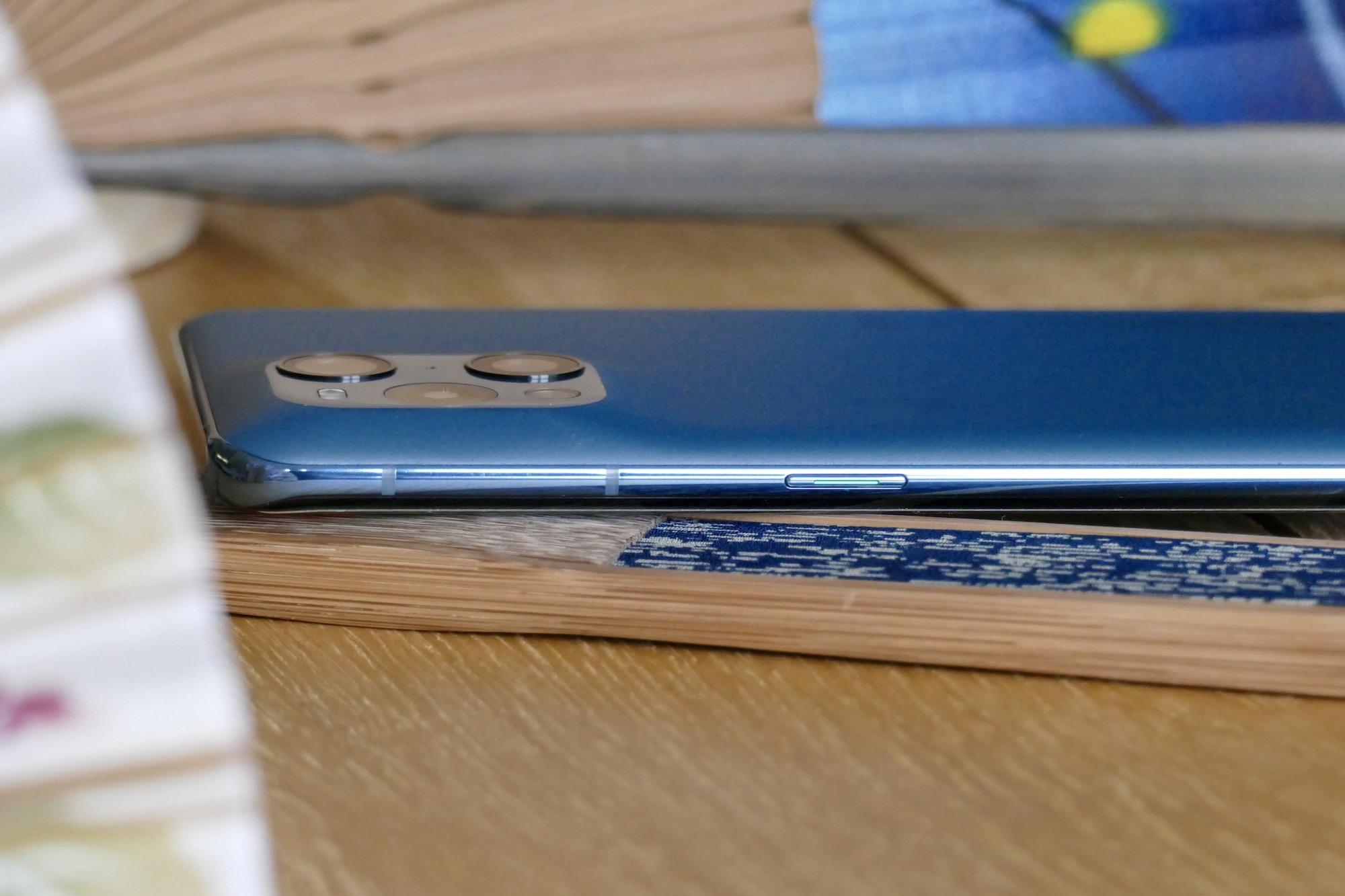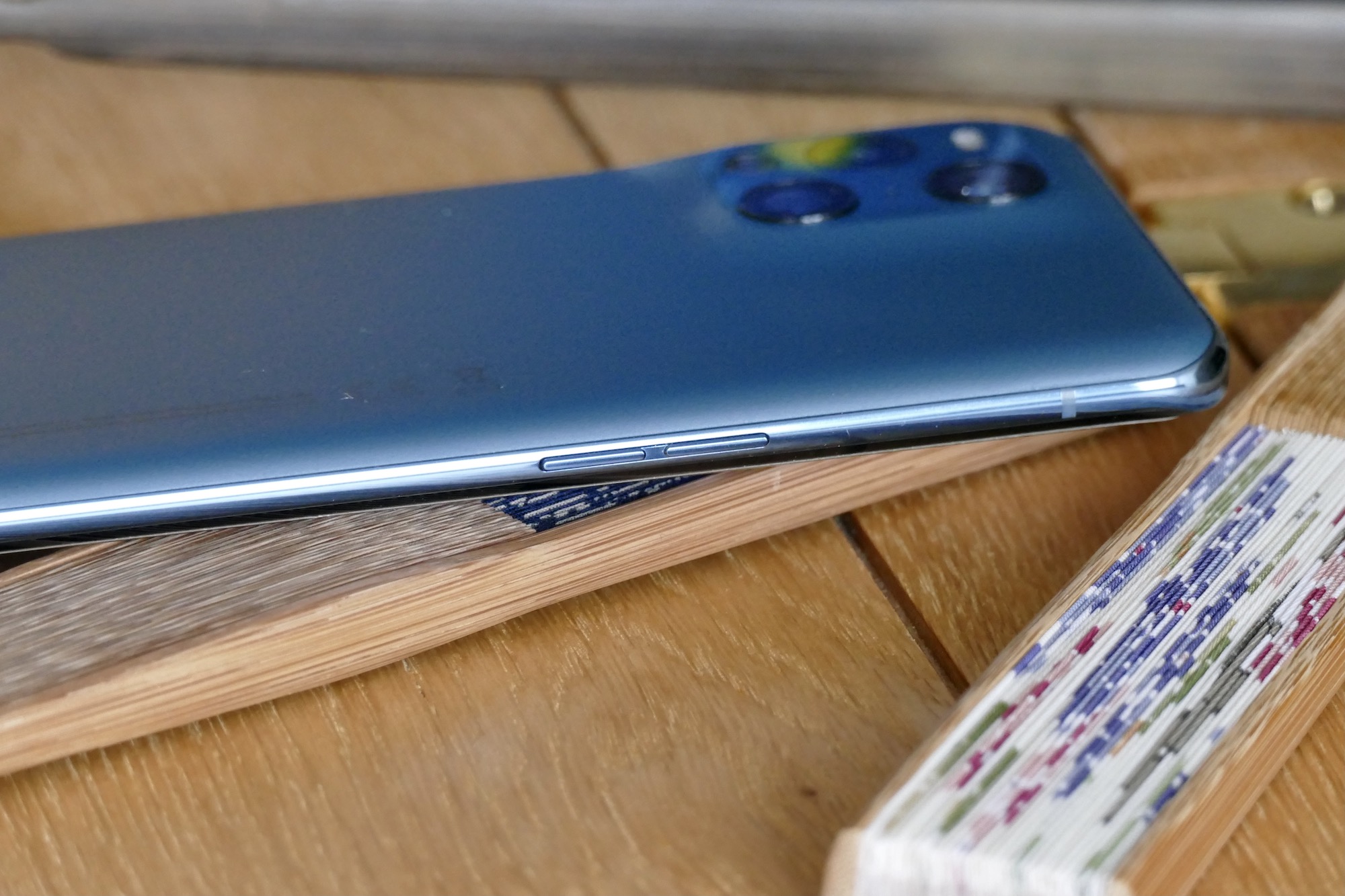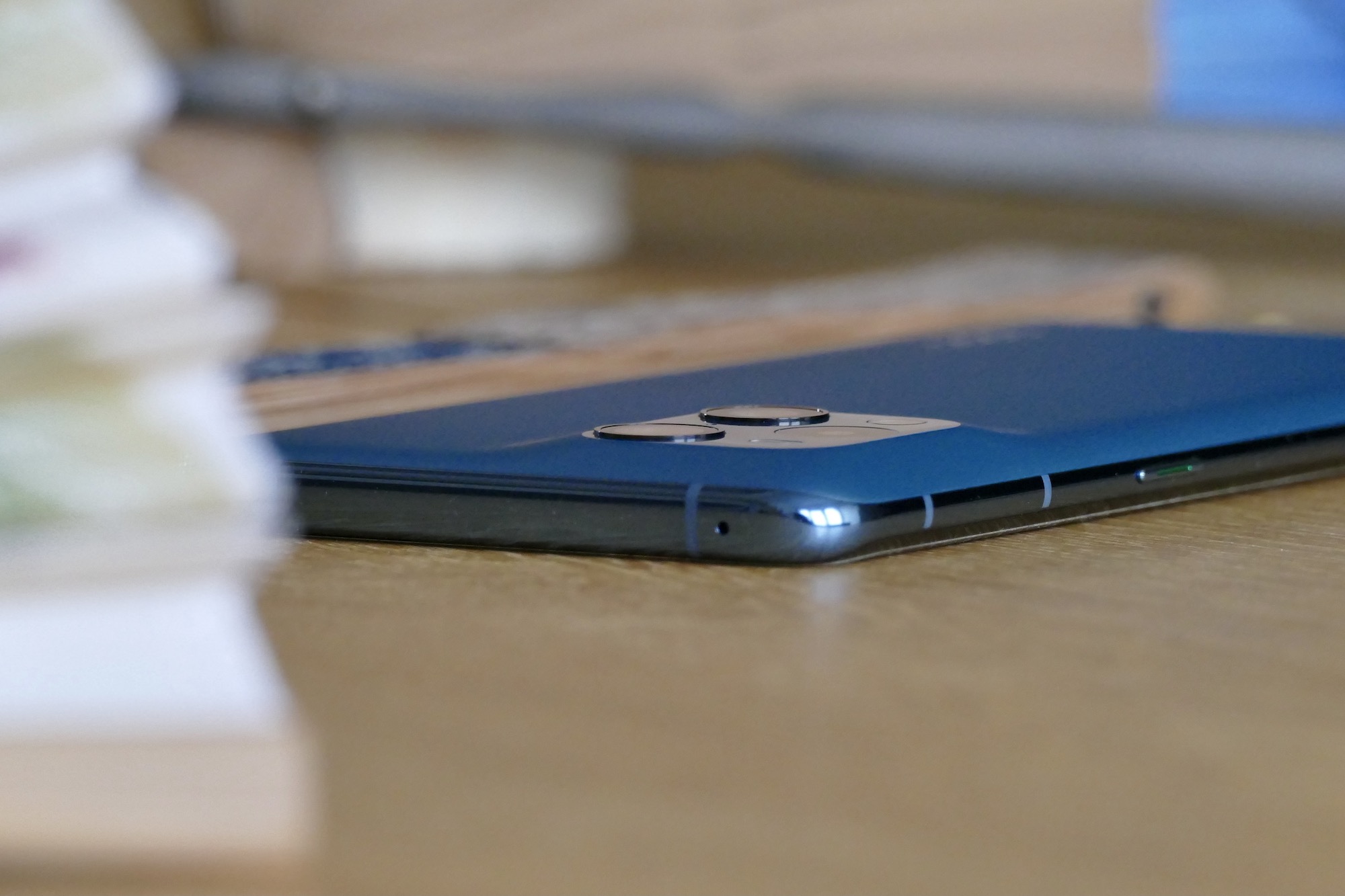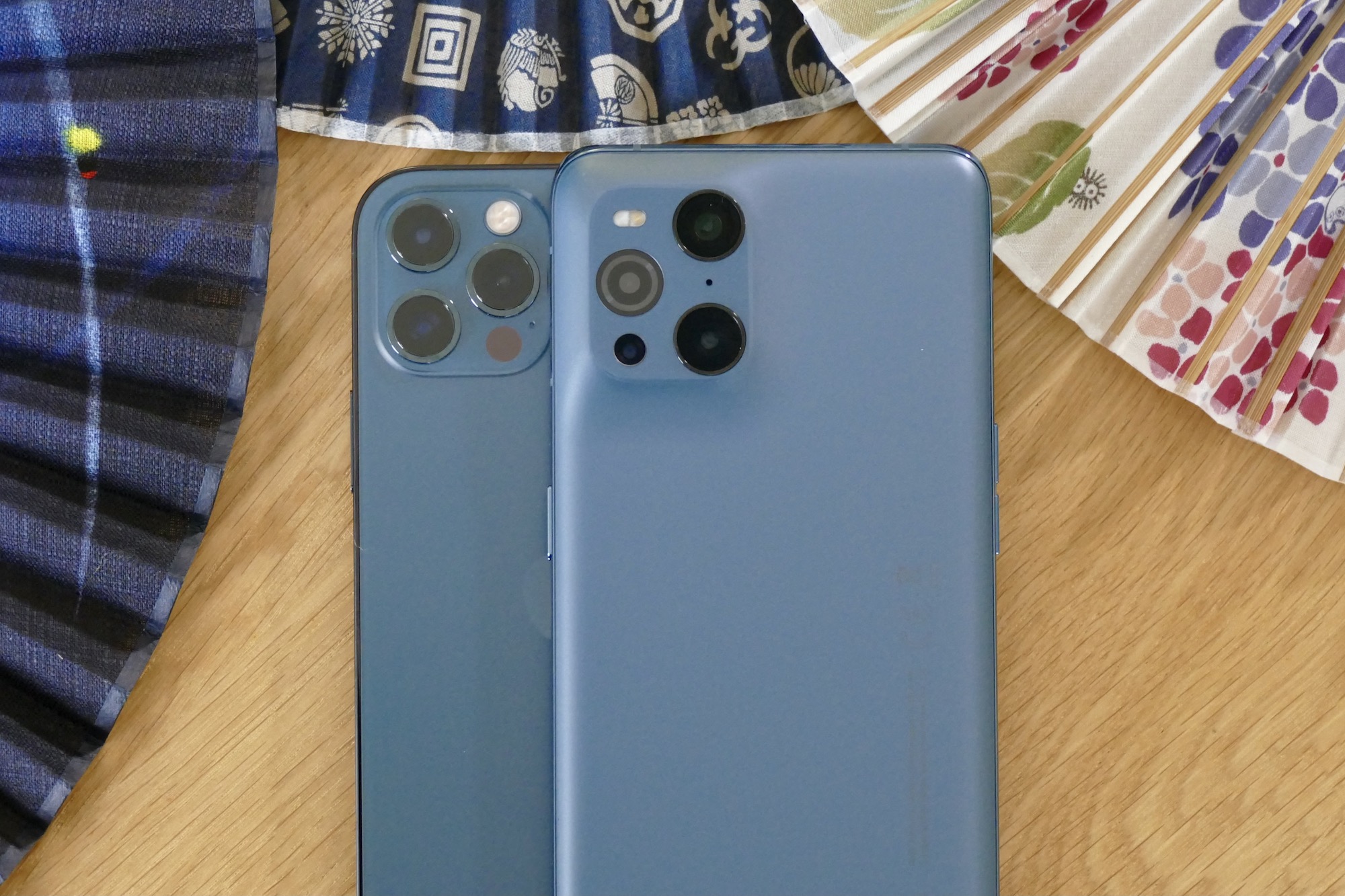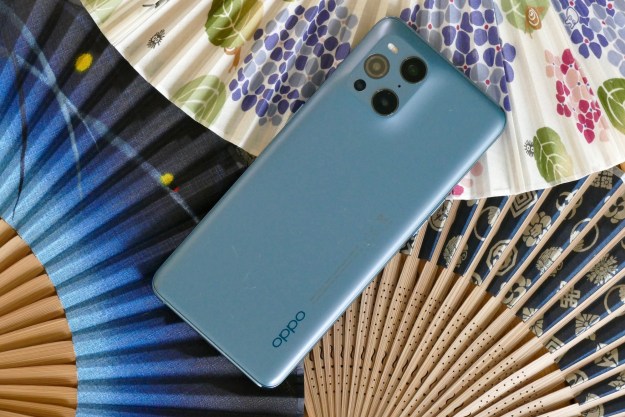
“The Oppo Find X3 Pro's sleek unibody design hides a superb, highly consistent camera and a stunning, 10-bit color screen. It's expensive, but it lives up to expectation.”
- Consistent, highly capable main camera
- Fun "microscope" camera
- Beautiful screen
- Compact, lightweight body
- Very fast charging
- 10-bit color features won't be relevant to many
- Software needs refinement
- More expensive than the competition
The Oppo Find X2 Pro flew under the radar a little following its release, perhaps suffering from unfortunate timing, as it was announced just before the coronavirus pandemic took hold across the world in 2020. Its relatively high price and Oppo’s newness as a brand outside of China were likely also factors. None of this took away from its ability, though, so it is with welcoming arms that I’ve embraced its sequel, the Oppo Find X3 Pro.
Oppo has made a phone that not only looks different, but is surprisingly compact for 2021 and, best of all, the Find X3 Pro is set to redefine how we expect the cameras on a smartphone to perform.
Design
Oppo has gone all out to make the Find X3 Pro look like no other flagship phone by using an unusual unibody design. This means the rear of the phone has been forged from a single piece of glass, with the camera module rising up and encasing the lenses in the top corner. It’s all one flowing panel, rather than separate pieces. Oppo said it took 2,000 attempts in its lab to get the process and final look exactly right.

The benefits come in the device’s slim 8.2mm body and very clean shape. There really are no sharp edges on the Find X3 Pro, with the corners and sides smoothly blending through to the next panel. The curve where the aluminum chassis meets the screen is pronounced, though, so it’s not quite as comfortable to hold as the Galaxy S21+ or the Huawei P40 Pro, but the low 193-gram weight stops it from being fatiguing.
While the unibody shape is very eye-catching, Oppo hasn’t been especially brave with the camera lens layout, as it’s basically a mirror image of the iPhone 12 Pro, nor with the color. My review model is in Matte Blue, and pretty though it is, it looks very similar to the Pacific Blue of the iPhone 12 Pro. What Oppo gives in terms of forward-thinking design, it takes away with these derivative elements.
However, putting these small aspects aside, there are a lot of good things about the phone’s design. It is far more compact and is lighter than most other recent high-end smartphones, so it fits in my pocket without weighing me down. I can hold it comfortably at all times without it feeling off-balance. The Oppo Find X3 Pro is a svelte, classy, and modern-looking smartphone that shifts away from the trend of making flagship phones gigantic, without sacrificing screen size. The matte finish keeps it looking clean, too.
Screen
Here’s where Oppo goes all Dr. Evil and starts talking about a billion colors a lot. The 6.7-inch AMOLED screen has a 10-bit color depth, or a little over 1 billion colors, and 100% DCI-P3 color gamut. Oppo then had it professionally calibrated, ensuring it makes the most of its ability and so we don’t have to mess around with tuning it ourselves. It should mean we can’t see color banding or dithering, like we may on lesser screens. The 10-bit color joins a 3216 x 1440 QHD+ resolution, a 120Hz adaptive refresh rate, 1,300 nits brightness, and HDR10+ support.

Oppo says the Find X3 Pro delivers the best color reproduction on any smartphone. But can our eyes really tell on a screen this size? Before addressing this, it’s worth saying how beautiful the Find X3 Pro’s screen is generally. It’s extremely close in performance to the Samsung Galaxy S21+, just not quite so bright when compared directly. Certainly for watching videos on YouTube and Netflix, it looks superb. But what about the 10-bit color?
Frustratingly, Oppo doesn’t tell you how to get the best from the screen, but after checking with Oppo, I was told the Vivid screen setting is the default profile for the 10-bit color management. I was also sent some HEIF, or high-efficiency, photos to assess, and when placed alongside the iPhone 12 Pro, they certainly looked fantastic. But if your photos are not in the compatible format, they don’t look any different, so the value is limited. Watching several videos said to be shot with a 10-bit-capable camera and comparing it alongside the Galaxy S21+, I think there were differences, with slightly less banding visible on the Find X3 Pro, but this could easily be my eyes playing tricks, simply because you really, really have to look closely to see anything “different.”

A 10-bit DCI-P3 screen on a smartphone is technically very impressive, but I’m not convinced of any actual benefit to anyone watching general content. This doesn’t change the fact the Find X3 Pro’s screen still looks fantastic.
Camera
There’s more talk of 1 billion colors when we get to the camera, which is the way owners of the phone will be able to directly exploit the Find X3 Pro’s 10-bit color screen, because you can take 10-bit color photos and video on it. This is done by flicking a switch in the Settings menu, so you can take photos in either 10-bit or normal mode. Take them in 10-bit, and the images are saved as High Efficiency Image Format (HEIF) files, which may cause some compatibility problems for viewing and editing.

The 10-bit color “feature” feels hugely geeky, and relevant to only a small amount of hardcore photographers at the moment, and it’s also a distraction from what actually makes the Find X3 Pro’s camera desirable — its use of two primary cameras. The 50-megapixel Sony IMX766 sensor is used for both the main wide-angle and the ultrawide camera, meaning color and balance is consistent across both cameras, a common complaint against other wide/ultrawide camera setups. These two cameras are joined by a 13-megapixel telephoto camera with a 5x hybrid zoom and a 20x digital zoom, plus an unusual 3MP Micro lens to take “microscope” photos at 60x zoom.
I’m several hundred photos into using the Find X3 Pro, and it’s the real deal. Not only does it take beautifully balanced photos with stunning dynamic range and color management, but it does so across both the main and ultrawide cameras.
The wide-angle example seen here with the bench underneath the tree would have looked very different taken on another phone. Instead, it’s almost indistinguishable in terms of balance, shadow, and color from the standard photo. Wonderful. It’s also very hard to fool the camera into behaving badly, as you can see in the photo shooting into the sun.
What about the Micro lens 60x microscope camera? It gets insanely close, just like a microscope, to take macro photos like you’ve never seen before. The example below is of moss. It’s a pure gimmick, but it really does do something no other phone camera can do, and although the results aren’t the greatest quality, it’s possible to have some real fun with it. It’s definitely not a reason to buy the phone, but it’s a welcome change from a useless 2MP macro camera just to fill space.

What about the 10-bit color mode? I don’t have a 10-bit color monitor, as I suspect many other people don’t either, so even though my Mac Mini M1 can open HEIF files, they look exactly the same on my screen as non-10-bit shots. Just forget the 10-bit talk, and rejoice that the Find X3 Pro’s camera truly delivers what we’ve wanted for a while: Consistency across the main and wide-angle cameras, which is a significant step forward in mobile photography.
Performance, battery, and software
The Oppo Find X3 Pro uses a Qualcomm Snapdragon 888 processor with 12GB of RAM and 256GB of storage space, plus it comes with 5G connectivity, Wi-Fi 6, and a 4,500mAh battery. Oppo’s ColorOS user interface, version 11.2 built over Android 11, is onboard. It’s better than ever before, but still frustrates and is less polished than rival systems from Samsung, OnePlus, and Google.

For example, by default, it spreads apps over multiple home screens, iOS-style, then leaves you to clean up when you switch to a Drawer layout. Notifications aren’t always consistent, with the lock screen not always showing new alerts, and on some occasions the camera app refused to work.
However, ColorOS is highly customizable, so many aspects can be altered. I don’t like the standard squared-off icons, but this can be changed in the Settings menu, along with the layout and design of the always-on display, the font, the colors, and the shape of the shortcut icons in the notification shade. None of this is essential, and isn’t pushed on you either, but it’s great to have such control over the look if you want it.
Oppo installs an app called O Relax, and while it’s easy to ignore preinstalled apps like this, don’t do so here. It’s a comprehensive white noise machine, and if, like me, you fall asleep to white noise, it’s a brilliant tool. There are a lot of of different options, from white and pink noise to ambient sounds including jungle, city, and, my personal favorite, cosmos. Interestingly, all tones can be “remixed” with your own additions, for a personalized sound. There’s a timer so it stops whenever you want. I really like it.
The Find X3 Pro’s camera truly delivers what we’ve wanted for a while: Consistency across the main and wide-angle cameras
Performance has been excellent throughout, and the Find X3 Pro Game Space mode boosts performance and minimizes distractions when playing games. Switch to Competition mode within it and Genshin Impact plays smoothly, but in the normal Balanced mode, there are some stutters. Gaming hits the 4500mAh battery hard, though, and you can expect a substantial dip when playing graphically intensive games. At first, the battery and its related software took a few days to “learn” my habits, resulting in some only average performance during my early use. After about a week, the Find X3 Pro settled down to deliver about two days of moderate use. On days with around three hours of screen time, but no gaming, the Find X3 Pro often still has 60% battery remaining at midnight.
Oppo has added its massively fast SuperVOOC charging, with the 65-watt system delivering a full charge in just 35 minutes. We tested this in the past and once again on the Find X3 Pro, it works exactly as described. The sheer speed encourages me to change my charging habits, and not simply leave the phone plugged in overnight. The Find X3 Pro also has 30W wireless charging and 10W reverse charging.
Price and availability
The Oppo Find X3 Pro has been announced for the U.K., where it starts at 1,099 British pounds, or about $1,527 U.S. It will be released on April 14 and sold unlocked through Oppo’s own online store, and with a contract through all major carriers. Oppo does not sell its phones in the U.S., but they are available for import.
Our take
The Find X2 Pro was Oppo’s best phone to date, and the Find X3 Pro has focused on the right aspects in a meaningful way, ensuring it takes the crown from its predecessor. It impresses with its camera and compact, lightweight design. The consistency from the standard and ultrawide camera is immediately noticeable, and gives you a lot more confidence when taking pictures, plus the overall performance is good.
I’ve enjoyed the Find X3 Pro a lot because of this, and because it’s just so neatly designed. There’s no fuss, and it’s not awkward to hold, or so heavy that it takes two hands to use. Oppo has the design and the size exactly right. However, the price is still a little on the high side, and the 10-bit color screen and camera features don’t have much relevance to regular people.
Is there a better alternative?
The Find X3 Pro’s price puts it up against the Galaxy S21+ and the iPhone 12 Pro, both of which are cheaper. We’d recommend the iPhone 12 Pro over the Find X3 Pro, but if you’re set on a new Android phone, we’d point you toward the Galaxy S21 Ultra. It’s slightly more expensive, but like the iPhone 12 Pro, it has superb all-around performance, an extremely capable camera, a stunning screen, and more consistent software. It also faces competition from the forthcoming OnePlus 9 Pro, which is likely to also undercut it on price.
How long will it last?
The phone is made from glass ,so a case is advisable if you’re a “dropper,” but handily Oppo provides an attractive silicon case in the box. It even comes in a matching blue color. The Find X3 Pro has an IP68 water-resistance rating for further peace of mind. There’s 5G on board to ensure it connects to the fastest possible network should it be available, but the bands for this may well only be tuned for the U.K. and Europe, so consider this if you plan to import one to the U.S.
The software on the phone is up to date at the moment, and Oppo’s guarantees at least two Android version updates, and two years of security patches too, both from the date of the device’s launch. This isn’t quite as comprehensive as Samsung’s security and software update schedules.
Should you buy one?
Yes. Oppo’s almost perfectly sized Find X3 Pro has a camera that sets it apart from the rest, and the consistency of results makes it easy to fully enjoy its ability.

